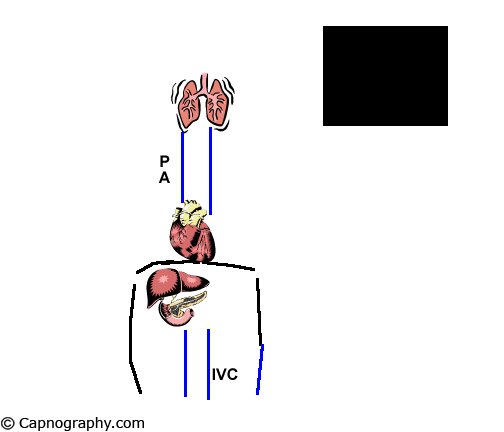Clinical Aspects
Venous C02 embolism
End-tidal C02 monitoring is essential during laparoscopy, as it may help in the early detection of venous C02 embolism (accidental insufflation of C02 into the veins). In addition, C02 is also absorbed from abdominal cavity. A transient but rapid rise in PETCO2, has been suggested as a useful early sign of venous C02 embolism.1 However, when CO2 embolus increases in size and thereby producing a mechanical obstruction, end-tidal CO2 decreases as can be seen from the following animation.

Reference
1. Shulman D, Aronsons HB. Capnography in the early diagnosis of carbon dioxide embolism. Can Anaesth Soc J 1984;31:455-9.

 Twitter
Twitter Youtube
Youtube









